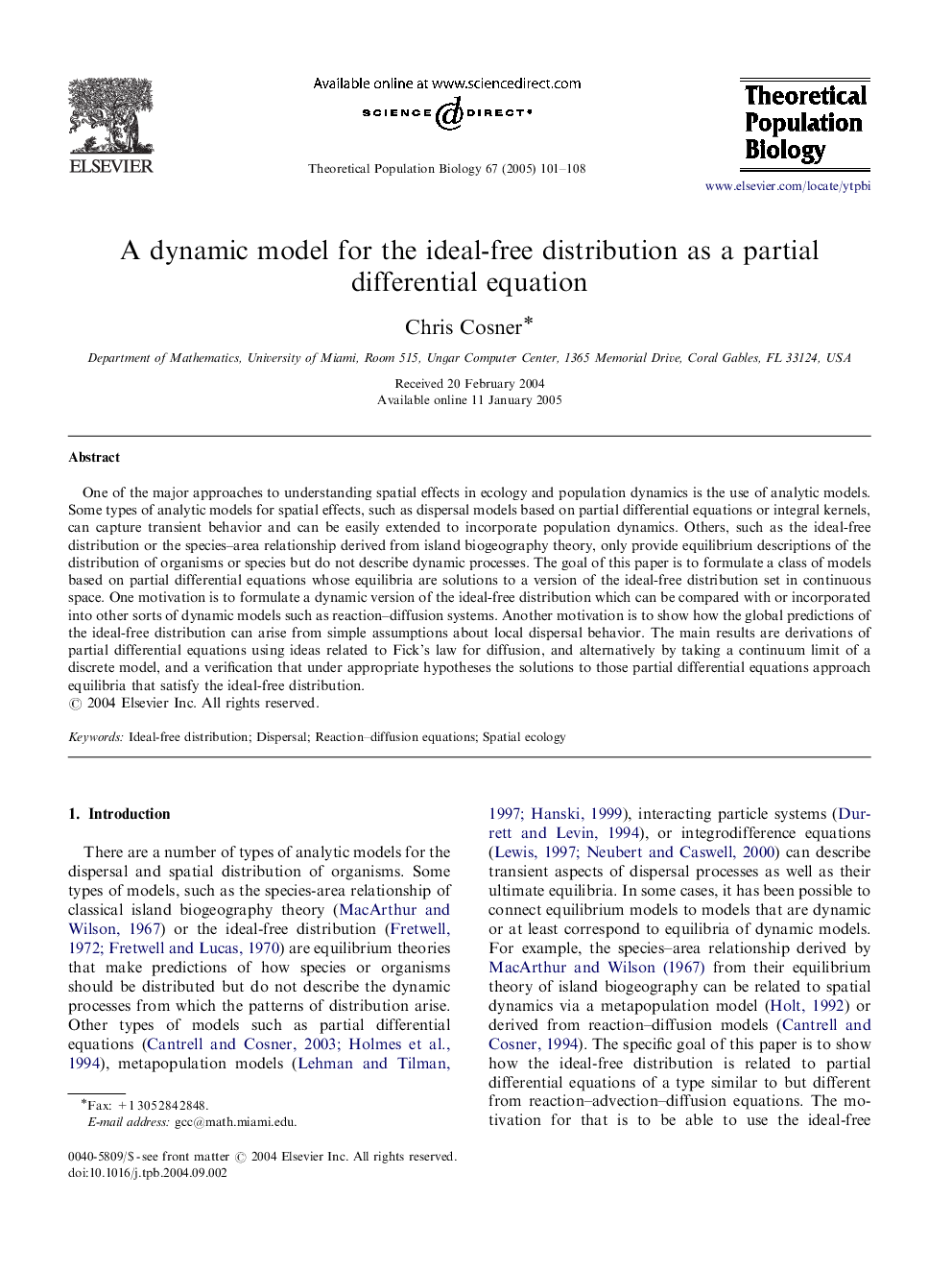| Article ID | Journal | Published Year | Pages | File Type |
|---|---|---|---|---|
| 9471514 | Theoretical Population Biology | 2005 | 8 Pages |
Abstract
One of the major approaches to understanding spatial effects in ecology and population dynamics is the use of analytic models. Some types of analytic models for spatial effects, such as dispersal models based on partial differential equations or integral kernels, can capture transient behavior and can be easily extended to incorporate population dynamics. Others, such as the ideal-free distribution or the species-area relationship derived from island biogeography theory, only provide equilibrium descriptions of the distribution of organisms or species but do not describe dynamic processes. The goal of this paper is to formulate a class of models based on partial differential equations whose equilibria are solutions to a version of the ideal-free distribution set in continuous space. One motivation is to formulate a dynamic version of the ideal-free distribution which can be compared with or incorporated into other sorts of dynamic models such as reaction-diffusion systems. Another motivation is to show how the global predictions of the ideal-free distribution can arise from simple assumptions about local dispersal behavior. The main results are derivations of partial differential equations using ideas related to Fick's law for diffusion, and alternatively by taking a continuum limit of a discrete model, and a verification that under appropriate hypotheses the solutions to those partial differential equations approach equilibria that satisfy the ideal-free distribution.
Related Topics
Life Sciences
Agricultural and Biological Sciences
Agricultural and Biological Sciences (General)
Authors
Chris Cosner,
